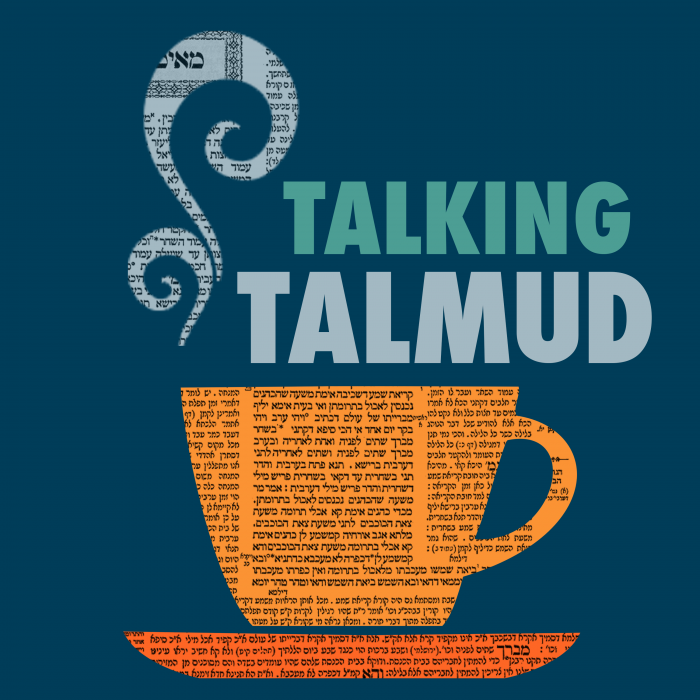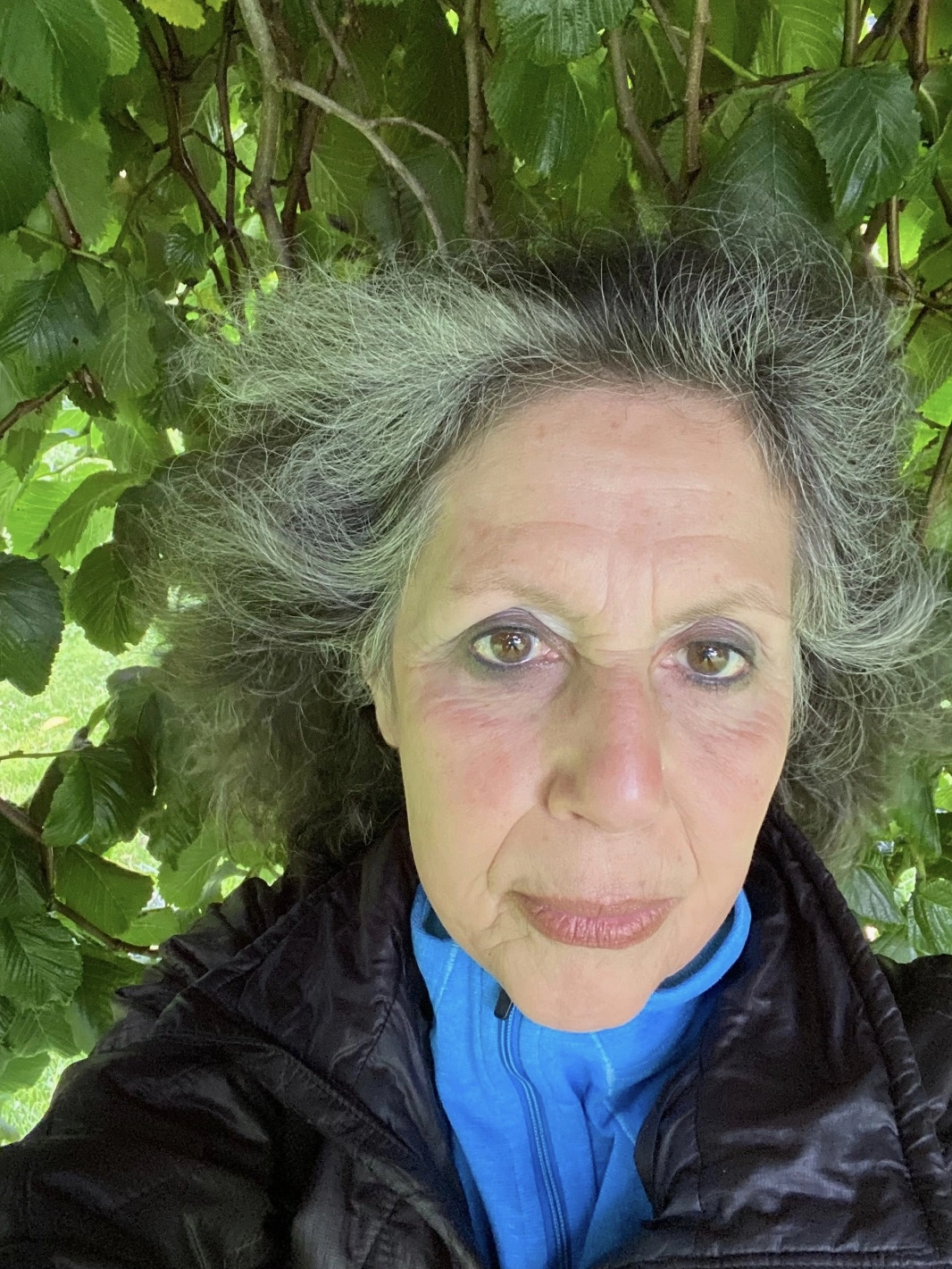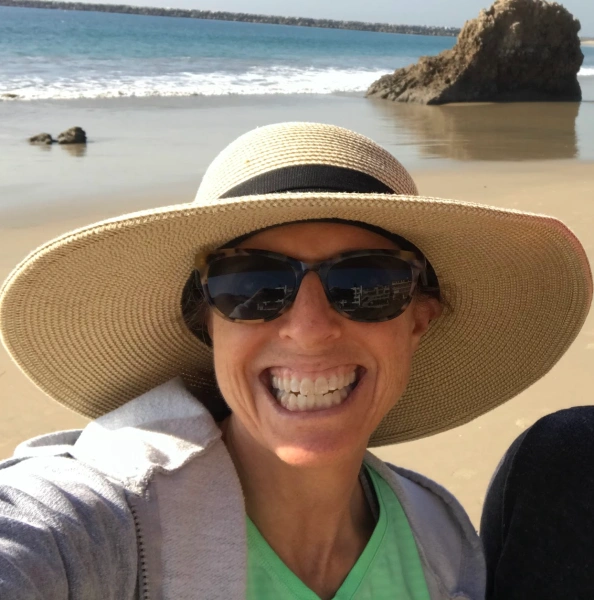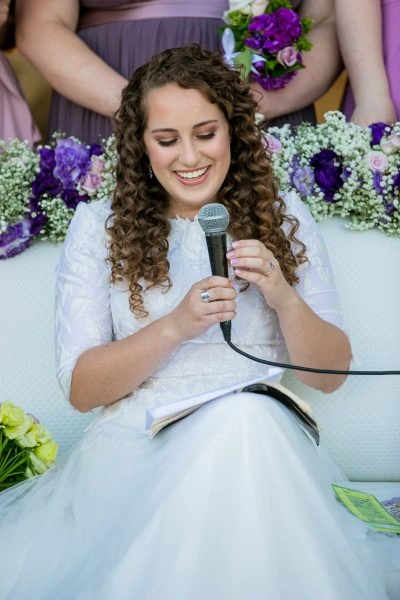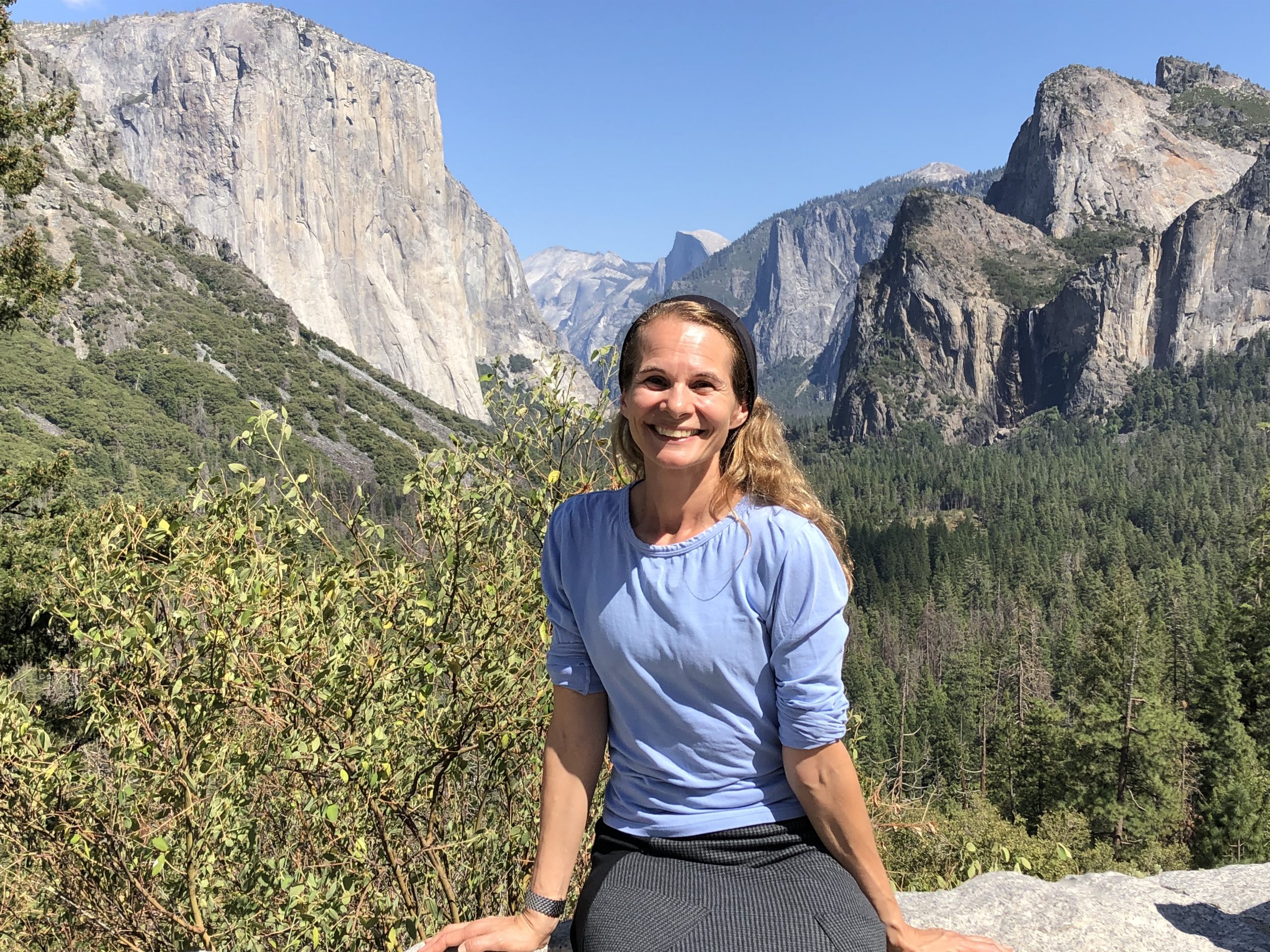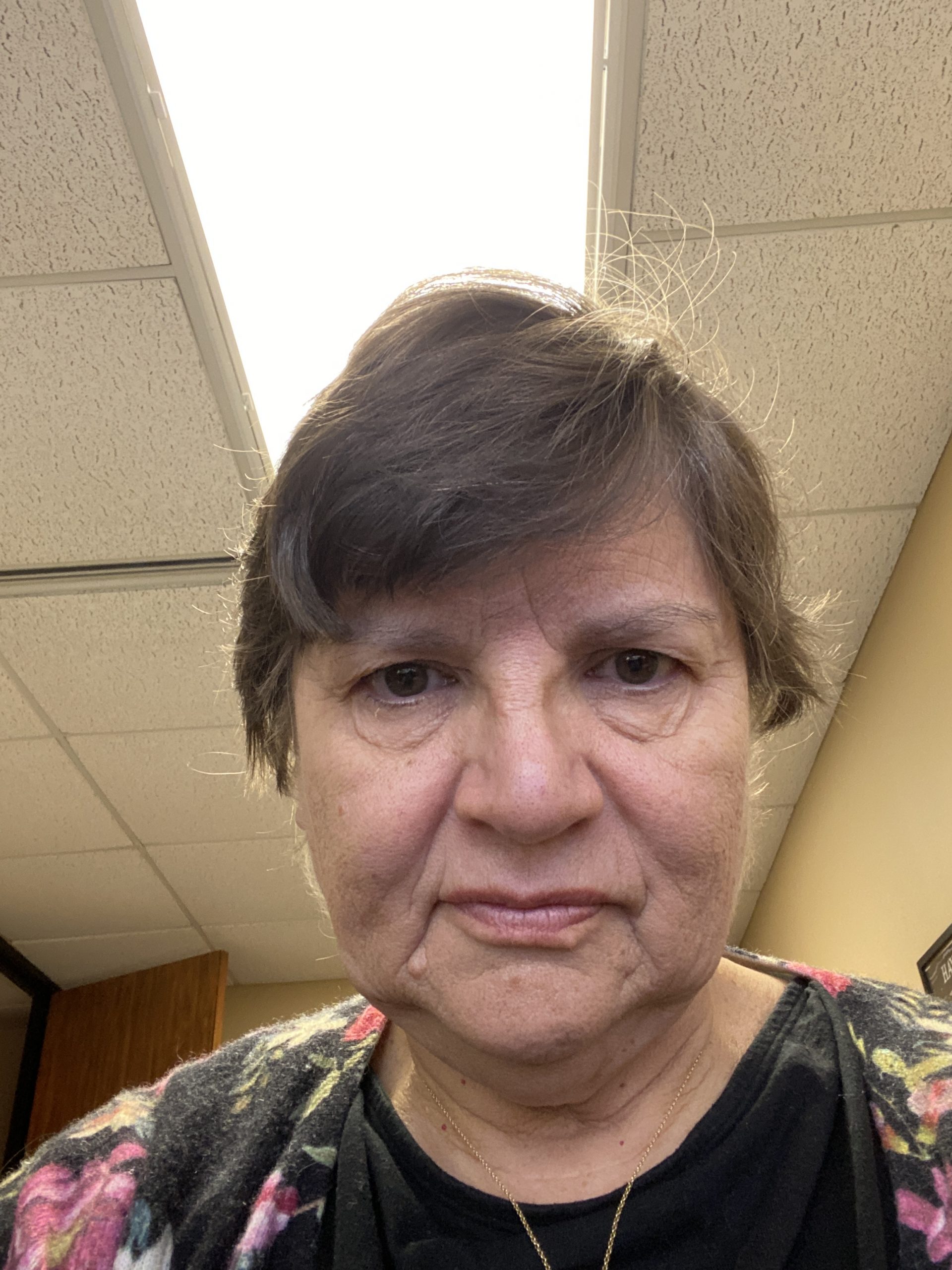Sanhedrin 3
שֶׁנֶּאֱמַר: ״מִשְׁפַּט אֶחָד יִהְיֶה לָכֶם״. וּמָה טַעַם אָמְרוּ דִּינֵי מָמוֹנוֹת לָא בָּעֵינַן דְּרִישָׁה וַחֲקִירָה? כְּדֵי שֶׁלֹּא תִּנְעוֹל דֶּלֶת בִּפְנֵי לוֹוִין.
The source for this is as it is stated: “You shall have one manner of law” (Leviticus 24:22), from which it is derived that all judges must judge in the same manner. And since with regard to cases of capital law it is stated: “And you shall inquire and investigate, and ask diligently” (Deuteronomy 13:15), the same should apply to cases of monetary law. And what is the reason that the Sages said that in cases of monetary law we do not require inquiry and interrogation of witnesses? The Gemara answers: The Sages established this exemption so as not to lock the door in the face of potential borrowers. If inquiry and interrogation of the witnesses would be required in order to have the court rule that the lender can collect payment of a loan, lenders would be deterred by the difficulty of proving the matter and might cease to lend money to the poor. For the same reason, the Sages also waived the need for expert judges in these cases.
אֶלָּא מֵעַתָּה, טָעוּ – לֹא יְשַׁלְּמוּ?! כׇּל שֶׁכֵּן אַתָּה נוֹעֵל דֶּלֶת בִּפְנֵי לוֹוִין!
The Gemara asks: If that is so, then if these laymen err they should not be liable to pay compensation to the party unfairly wronged by their judgment, just as expert judges are not liable. The Gemara responds: If this is the halakha, you are all the more so locking the door in the face of potential borrowers; wealthy people will not want to lend money, as they will fear that a court of laymen will judge the case incorrectly.
אִי הָכִי, תַּרְתֵּי קָתָנֵי: דִּינֵי מָמוֹנוֹת בִּשְׁלֹשָׁה הֶדְיוֹטוֹת, גְּזֵילוֹת וַחֲבָלוֹת בִּשְׁלֹשָׁה מוּמְחִין.
With regard to Rabbi Abbahu’s method of explaining the mishna, the Gemara asks: If that is so, then instead of explaining the mishna employing the style: What are these, Rabbi Abbahu could more easily say that two matters are taught in the mishna, and explain it as follows: Cases of monetary law, meaning cases of admissions and loans, are adjudicated by three judges who could be non-ordained laymen [hedyotot], and cases of robbery and personal injury are adjudicated by three ordained, expert judges.
וְעוֹד, שְׁלֹשָׁה שְׁלֹשָׁה לְמָה לִי?
And furthermore, according to Rabbi Abbahu’s explanation that the term: Cases of robbery and personal injury, simply clarifies the meaning of the term: Cases of monetary law, why do I need the repetitive statement that cases of monetary law are adjudicated by three judges and cases of robbery and injury are adjudicated by three judges? The repetition seems to indicate that these are two separate matters.
אֶלָּא אָמַר רָבָא: תַּרְתֵּי קָתָנֵי, מִשּׁוּם דְּרַבִּי חֲנִינָא. רַב אַחָא בְּרֵיהּ דְּרַב אִיקָא אָמַר: מִדְּאוֹרָיְיתָא חַד נָמֵי כָּשֵׁר, שֶׁנֶּאֱמַר ״בְּצֶדֶק תִּשְׁפֹּט עֲמִיתֶךָ״. אֶלָּא מִשּׁוּם יוֹשְׁבֵי קְרָנוֹת.
Rather, Rava said: Two matters are in fact taught in the mishna, because of the statement of Rabbi Ḥanina that the Sages instituted leniencies with regard to cases of monetary law so as not to lock the door in the face of potential borrowers. Rav Aḥa, son of Rav Ika, said: By Torah law, the adjudication of one judge is also valid in cases of admissions and loans, as it is stated: “In righteousness shall you judge your neighbor” (Leviticus 19:15), in the singular. But by rabbinic law, three judges are required, due to the concern that a single judge may be one of those who sit idly on street corners, i.e., unlearned people who are not involved in business and are unlikely to judge the case correctly.
אַטּוּ בִּתְלָתָא מִי לָא הָווּ יוֹשְׁבֵי קְרָנוֹת? אִי אֶפְשָׁר דְּלֵית בְּהוּ חַד דִּגְמִיר. אֶלָּא מֵעַתָּה, טָעוּ – לֹא יְשַׁלְּמוּ?! כׇּל שֶׁכֵּן דִּנְפִישִׁי יוֹשְׁבֵי קְרָנוֹת!
The Gemara asks: Is that to say that with three judges they will not be among those who sit idly on street corners? How is this concern addressed by increasing the number of judges? The Gemara answers: When there are three judges it is impossible, i.e., highly unlikely, that there is not among them one who is learned. The Gemara asks: If that is so, then if they err they should not be liable to pay compensation, since rabbinic law authorizes laymen to judge cases of this nature. The Gemara answers: If the judges will be exempt from paying compensation in the event that they err in their judgment, this lack of accountability will lead all the more so to having many of those who sit idly on street corners assume the role of judges.
מַאי אִיכָּא בֵּין רָבָא לְרַב אַחָא בְּרֵיהּ דְּרַב אִיקָא? אִיכָּא בֵּינַיְיהוּ – דְּאָמַר שְׁמוּאֵל: שְׁנַיִם שֶׁדָּנוּ, דִּינֵיהֶן דִּין, אֶלָּא שֶׁנִּקְרְאוּ בֵּית דִּין חָצוּף. לְרָבָא לֵית לֵיהּ דִּשְׁמוּאֵל, לְרַב אַחָא בְּרֵיהּ דְּרַב אִיקָא אִית לֵיהּ דִּשְׁמוּאֵל.
The Gemara asks: What are the implications of the difference between the opinion of Rava, who says that cases of monetary law may be adjudicated by three laymen due to the statement of Rabbi Ḥanina, and the opinion of Rav Aḥa, son of Rav Ika, who holds that according to the Torah one judge is sufficient? The Gemara answers: The difference between them is with regard to that which Shmuel says: If two people adjudicated a case, their judgment is a valid judgment, but they are called an impudent court. Rava is of the opinion that the halakha is not in accordance with the opinion of Shmuel, as he holds that three judges are required by Torah law. Rav Aḥa, son of Rav Ika, is of the opinion that the halakha is in accordance with the opinion of Shmuel, as he holds that fundamentally, even one judge may judge a case of monetary law.
נֶזֶק וַחֲצִי נֶזֶק וְכוּ׳. נֶזֶק הַיְינוּ חֲבָלוֹת? מִשּׁוּם דְּקָא בָּעֵי לְמִיתְנֵא חֲצִי נֶזֶק, תָּנֵי נָמֵי נֶזֶק שָׁלֵם.
§ The mishna teaches that cases involving payment for damage and payment for half the damage are adjudicated by three judges. The Gemara challenges: Damage is the same as injury, since the term: Injury, includes various damages one causes another directly or by his property. The Gemara explains: Since he needed to teach the halakha with regard to payment of half the cost of the damage, he also taught the halakha with regard to payment of the full cost of the damage.
חֲצִי נֶזֶק נָמֵי – הַיְינוּ חֲבָלוֹת! תְּנָא מָמוֹנָא, וְקָתָנֵי קְנָסָא.
The Gemara challenges: Payment of half the damage is also the same as personal injury, so it did not need to be stated separately. The Gemara explains: There is a difference. The tanna taught the halakha with regard to a case of monetary matters, and he also taught the halakha with regard to a case of a fine, such as payment of half the damage in a case where an innocuous ox gored another animal. Consequently, payment of half the cost of the damage needed to be stated separately from payment for injury, and once he needed to teach the halakha with regard to payment for half the cost of the damage, he first mentioned general payments for damages.
הָנִיחָא לְמַאן דְּאָמַר: ״פַּלְגָא נִיזְקָא קְנָסָא״, אֶלָּא לְמַאן דְּאָמַר: ״פַּלְגָא נִיזְקָא מָמוֹנָא״, מַאי אִיכָּא לְמֵימַר?
The Gemara asks: This works out well according to the one who says that the payment for half the cost of the damage is considered a fine, meaning that according to the standard halakhot of damages the owner of the goring ox should be exempt, and the Torah instituted a payment of half the cost of the damage as a penalty for not being exceedingly careful. But according to the one who says that the payment for half the cost of the damage is an actual monetary payment, meaning that according to the standard halakhot of damages the owner of the goring ox should be fully liable but the Torah exempted him from part of his liability due to the unusual nature of the damage, what can be said? Therefore, this explanation must be rejected.
אֶלָּא, אַיְּידֵי דְּקָא בָּעֵי לְמִיתְנֵא תַּשְׁלוּמֵי כֶּפֶל וְתַשְׁלוּמֵי אַרְבָּעָה וַחֲמִשָּׁה, דְּמָמוֹן
Rather, since the tanna needed to teach the halakha with regard to cases involving payment of double the principal and payment of four or five times the principal, which are cases of money
שֶׁאֵינוֹ מִשְׁתַּלֵּם בְּרֹאשׁ הוּא, תְּנָא נָמֵי חֲצִי נֶזֶק, דְּמָמוֹן שֶׁאֵינוֹ מִשְׁתַּלֵּם בְּרֹאשׁ הוּא. וְאַיְּידֵי דְּקָא בָּעֵי לְמִיתְנֵא חֲצִי נֵזֶק, תְּנָא נָמֵי נֵזֶק.
that is not paid according to its value, meaning that the payment is not equal to the cost of the damage but is actually more than that amount, he also taught the halakha with regard to payment of half the cost of the damage, which is also money that is not paid according to its value, as he pays less than the full cost of the damage. And since he needs to teach the halakha with regard to payment of half the cost of the damage, he also taught the halakha with regard to payment of the full cost of the damage.
שְׁלֹשָׁה מְנָלַן? דְּתָנוּ רַבָּנַן: ״וְנִקְרַב בַּעַל הַבַּיִת אֶל הָאֱלֹהִים״ – הֲרֵי כָּאן אֶחָד, ״עַד הָאֱלֹהִים יָבֹא דְּבַר שְׁנֵיהֶם״ – הֲרֵי כָּאן שְׁנַיִם, ״אֲשֶׁר יַרְשִׁיעֻן אֱלֹהִים״ – הֲרֵי כָּאן שְׁלֹשָׁה, דִּבְרֵי רַבִּי יֹאשִׁיָּה.
§ The Gemara asks: From where do we derive the fundamental requirement for three judges? The Gemara answers: This is as the Sages taught: The verse states: “The owner of the house shall come near the court, to see whether he has not put his hand upon his neighbor’s property” (Exodus 22:7), so there is one judge here. The following verse states: “The cause of both parties shall come before the court,” so there are two judges here. And that verse concludes: “He whom the court shall condemn shall pay double to his neighbor,” so there are three judges here, corresponding to the three mentions of the term “the court.” This is the statement of Rabbi Yoshiya.
רַבִּי יוֹנָתָן אוֹמֵר: רִאשׁוֹן תְּחִילָּה נֶאֱמַר, וְאֵין דּוֹרְשִׁין תְּחִילּוֹת. אֶלָּא ״עַד הָאֱלֹהִים יָבֹא דְּבַר שְׁנֵיהֶם״ – הֲרֵי כָּאן אֶחָד, ״אֲשֶׁר יַרְשִׁיעֻן אֱלֹהִים״ – הֲרֵי כָּאן שְׁנַיִם, וְאֵין בֵּית דִּין שָׁקוּל. מוֹסִיפִין עֲלֵיהֶן עוֹד אֶחָד – הֲרֵי כָּאן שְׁלֹשָׁה.
Rabbi Yonatan says: The first instance of the term “the court” is stated first as part of the primary text of the passage, and it is necessary for conveying the straightforward meaning of the verse. And one does not derive tallies for halakhic matters by counting the first mention of a term. Rabbi Yonatan holds that when a tally is derived from the number of instances a certain word appears in the Torah, the first instance is not included in the tally, as it is necessary to teach the mitzva itself; the tally may be counted only from subsequent mentions. Rather, this is how it is derived: “The cause of both parties shall come before the court,” there is one judge here, and the continuation of the verse: “He whom the court shall condemn” teaches that there are two judges here. And since a court may not be composed of an even number of judges, they must add an additional one to them, so there are three judges here.
נֵימָא בְּדוֹרְשִׁין תְּחִילּוֹת קָמִיפַּלְגִי? דְּמָר סָבַר: דּוֹרְשִׁין תְּחִילּוֹת, וּמַר סָבַר: אֵין דּוֹרְשִׁין תְּחִילּוֹת. לָא, דְּכוּלֵּי עָלְמָא אֵין דּוֹרְשִׁין תְּחִילּוֹת. אָמַר לָךְ רַבִּי יֹאשִׁיָּה: אִם כֵּן, נֵימָא קְרָא ״וְנִקְרַב בַּעַל הַבַּיִת אֶל הַשּׁוֹפֵט״. מַאי ״אֶל הָאֱלֹהִים״? שְׁמַע מִינַּהּ לְמִנְיָינָא.
Let us say that Rabbi Yoshiya and Rabbi Yonatan disagree with regard to whether one derives tallies for halakhic matters from the first mention of a term in the Torah. As one Sage, Rabbi Yoshiya, holds that one derives tallies from the first mention of the term in the Torah, and one Sage, Rabbi Yonatan, holds that one does not derive tallies from the first mention of the term. The Gemara rejects this suggestion: No, actually everyone holds that one does not derive tallies from the first mention of the term, but in this case there is a separate source for the derivation, as Rabbi Yoshiya could have said to you: If it is true that no halakha is derived from the first mention, let the verse say: The owner of the house shall come near to the judge [hashofet]. What, then, is the significance of the unique expression: “To the court [haelohim]”? Conclude from it that the term elohim was chosen to count toward the tally.
וְרַבִּי יוֹנָתָן, לִישָּׁנָא דְּעָלְמָא נְקַט, כִּדְאָמְרִי אִינָשֵׁי: מַאן דְּאִית לֵיהּ דִּינָא – לִיקְרַב לְגַבֵּי דַּיָּינָא.
The Gemara asks: And how would Rabbi Yonatan respond to this analysis? The Gemara answers: He would say that the verse employed the common language of the world, as people say: One who has a case, a claim against another, should approach the regular judge, the one who generally judges cases and can be referred to by the term elohim. Consequently, no unique halakha can be derived from this first usage.
וְרַבִּי יֹאשִׁיָּה לֵית לֵיהּ בֵּית דִּין נוֹטֶה? וְהָתַנְיָא: רַבִּי אֱלִיעֶזֶר בְּנוֹ שֶׁל רַבִּי יוֹסֵי הַגְּלִילִי אוֹמֵר, מָה תַּלְמוּד לוֹמַר ״לִנְטֹת אַחֲרֵי רַבִּים לְהַטֹּת״? הַתּוֹרָה אָמְרָה: עֲשֵׂה לְךָ בֵּית דִּין נוֹטֶה.
But doesn’t Rabbi Yoshiya accept the principle that a court must be composed of an odd number of judges? And isn’t it taught in a baraita: Rabbi Eliezer, son of Rabbi Yosei HaGelili, says: What is the meaning when the verse states: “To incline after a multitude to pervert justice” (Exodus 23:2)? The meaning is that the Torah is saying to you: Make for yourself a court that is composed of an odd number of judges, that will perforce incline in one direction, so that there will always be a majority that can be followed.
סָבַר לַהּ כְּרַבִּי יְהוּדָה, דְּאָמַר: שִׁבְעִים. דִּתְנַן: סַנְהֶדְרִי גְּדוֹלָה הָיְתָה שֶׁל שִׁבְעִים וְאֶחָד, רַבִּי יְהוּדָה אוֹמֵר: שִׁבְעִים.
The Gemara answers: Rabbi Yoshiya does not accept this halakha but instead holds in accordance with the opinion of Rabbi Yehuda, who says: A Great Sanhedrin is composed of seventy judges. As we learned in the mishna: The Great Sanhedrin was composed of seventy-one judges, and Rabbi Yehuda says: It is composed of seventy judges. Clearly, Rabbi Yehuda does not accept the principle that a court must be composed of an odd number of judges.
אֵימַר דְּשָׁמְעַתְּ לֵיהּ לְרַבִּי יְהוּדָה בְּסַנְהֶדְרִי גְּדוֹלָה, דִּכְתִיבִי קְרָאֵי. בִּשְׁאָר בֵּי דִינָא מִי שָׁמְעַתְּ לֵיהּ?
The Gemara asks: Say that you heard that Rabbi Yehuda said this halakha with regard to the Great Sanhedrin, about which specific verses are written, and he derives from these verses that the Great Sanhedrin must be composed of exactly seventy judges. Have you heard him say with regard to the rest of the courts, those whose composition is not explicitly addressed in the Torah, that these courts can also be composed of an even number of judges?
וְכִי תֵּימָא: לָא שְׁנָא, וְהָתְנַן: סְמִיכַת זְקֵנִים וַעֲרִיפַת עֶגְלָה בִּשְׁלֹשָׁה, דִּבְרֵי רַבִּי שִׁמְעוֹן. רַבִּי יְהוּדָה אוֹמֵר: בַּחֲמִשָּׁה.
And if you would say: There is no difference; Rabbi Yehuda does not differentiate between the Great Sanhedrin and lower courts, but didn’t we learn in the mishna: The laying of hands by the Sages and the breaking of the heifer’s neck are performed in front of a panel of three judges; this is the statement of Rabbi Shimon. Rabbi Yehuda says: These rituals are performed in front of five judges.
וְאָמְרִינַן: מַאי טַעְמָא דְּרַבִּי יְהוּדָה? ״וְסָמְכוּ״ – שְׁנַיִם, ״זִקְנֵי״ – שְׁנַיִם, וְאֵין בֵּית דִּין שָׁקוּל, מוֹסִיפִין עֲלֵיהֶן עוֹד אֶחָד, הֲרֵי כָּאן חֲמִשָּׁה.
And we say with regard to this halakha: What is the reasoning of Rabbi Yehuda? The verse states: “And the Elders of the congregation shall lay their hands upon the head of the bullock” (Leviticus 4:15). The term: “Shall lay their hands,” which is in the plural, indicates that there are two, and the word “Elders,” which is also plural, indicates another two, meaning a total of four. And since a court may not be composed of an even number of judges, we add another one to them, and there are five judges here. Consequently, Rabbi Yehuda does accept the halakha that a court may not be composed of an even number of judges.
דְּרַבִּי יֹאשִׁיָּה עֲדִיפָא מִדְּרַבִּי יְהוּדָה, דְּאִילּוּ רַבִּי יְהוּדָה בְּסַנְהֶדְרִי גְּדוֹלָה הוּא דְּלֵית לֵיהּ, הָא בִּשְׁאָר בֵּי דִינָא אִית לֵיהּ. וְרַבִּי יֹאשִׁיָּה בִּשְׁאָר בֵּי דִינָא נָמֵי לֵית לֵיהּ. וְאֶלָּא הַאי ״לִנְטֹת״ מַאי עָבֵיד לֵיהּ? מוֹקֵים לֵהּ בְּדִינֵי נְפָשׁוֹת.
The Gemara answers: It can be explained that Rabbi Yoshiya holds in accordance with the opinion of Rabbi Yehuda but goes further than he does. This is because Rabbi Yehuda does not accept the principle that a court must be composed of an odd number of judges in connection with a Great Sanhedrin, but with regard to other courts he does accept it. And Rabbi Yoshiya also does not accept it with regard to other courts. The Gemara asks: And what does he do with this verse: “To incline after a multitude to pervert justice”? The Gemara answers: Rabbi Yoshiya interprets it in relation to cases of capital law. In such cases he agrees that the court must be composed of an odd number of judges, in order that it will be possible to exonerate the accused on the basis of a majority of one judge.
אֲבָל בְּדִינֵי מָמוֹנוֹת – לָא? אֶלָּא הָא דִּתְנַן: שְׁנַיִם אוֹמְרִים זַכַּאי וְאֶחָד אוֹמֵר חַיָּיב – זַכַּאי, שְׁנַיִם אוֹמְרִים חַיָּיב וְאֶחָד אוֹמֵר זַכַּאי – חַיָּיב. נֵימָא דְּלָא כְּרַבִּי יֹאשִׁיָּה?
The Gemara asks: But does Rabbi Yoshiya not accept the requirement for an odd number of judges with regard to cases of monetary law? But there is that which we learned in a mishna (29a): If two judges say the defendant is exempt from payment and one says he is liable, he is exempt; if two say he is liable and one says he is exempt, he is liable. Let us say that this mishna is not in accordance with the opinion of Rabbi Yoshiya, as Rabbi Yoshiya does not accept the requirement for an odd number of judges concerning cases of monetary law, and therefore perhaps he holds that the verdict must be agreed upon unanimously by all the judges.
אֲפִילּוּ תֵּימָא רַבִּי יֹאשִׁיָּה, מַיְיתֵי לַהּ בְּקַל וָחוֹמֶר מִדִּינֵי נְפָשׁוֹת: וּמָה דִּינֵי נְפָשׁוֹת דַּחֲמִירִי, אָמַר רַחֲמָנָא ״זִיל בָּתַר רוּבָּא״, דִּינֵי מָמוֹנוֹת לֹא כׇּל שֶׁכֵּן?
The Gemara rejects this possibility: You may even say that the mishna is in accordance with the opinion of Rabbi Yoshiya. Although he does not accept the requirement for an odd number of judges in cases of monetary law, he does allow for a decision on the basis of a majority. He derives this principle based on an a fortiori inference from cases of capital law: If concerning cases of capital law, which are strict, the Merciful One states in the Torah: Follow the majority, and does not require a unanimous ruling, concerning cases of monetary law, which are more lenient, is it not all the more so clear that a majority ruling is sufficient?
תָּנוּ רַבָּנַן: דִּינֵי מָמוֹנוֹת בִּשְׁלֹשָׁה, רַבִּי אוֹמֵר: בַּחֲמִשָּׁה, כְּדֵי שֶׁיִּגָּמֵר הַדִּין בִּשְׁלֹשָׁה. אַטּוּ בִּתְלָתָא מִי לָא גָּמַר דִינָא בִּתְרֵי? הָכִי קָאָמַר: מִפְּנֵי שֶׁגְּמַר דִּין בִּשְׁלֹשָׁה. אַלְמָא קָסָבַר: תְּלָתָא כִּי כְּתִיבִי – בִּגְמַר דִינָא כְּתִיבִי.
§ The Sages taught: Cases concerning monetary law are adjudicated by three judges. Rabbi Yehuda HaNasi says: They are adjudicated by five judges, so that a verdict can be issued with three judges. The Gemara asks: Is that to say that with a court of three judges a verdict cannot be issued by two judges? The Gemara answers: This is what Rabbi Yehuda HaNasi is saying: Cases of monetary law are adjudicated by five judges, due to the fact that a verdict must be issued by three. In other words, according to Rabbi Yehuda HaNasi the judges who form the majority that decides the verdict must themselves be eligible to constitute a court. Evidently, Rabbi Yehuda HaNasi holds that when the requirement for three judges is written in the Torah, it is written with regard to the number of judges necessary to issue the verdict.
מְגַדֵּף בַּהּ רַבִּי אֲבָהוּ: אֶלָּא מֵעַתָּה, תְּהֵא סַנְהֶדְרִי גְּדוֹלָה צְרִיכָה מֵאָה וְאַרְבָּעִים וְאֶחָד, כְּדֵי שֶׁיִּגָּמֵר הַדִּין בְּשִׁבְעִים וְאֶחָד? וּתְהֵא סַנְהֶדְרִי קְטַנָּה צְרִיכָה אַרְבָּעִים וַחֲמִשָּׁה, כְּדֵי שֶׁיִּגָּמֵר הַדִּין בִּשְׁלֹשָׁה וְעֶשְׂרִים?
Rabbi Abbahu would ridicule [megaddef ] this suggestion. If that is so, then the Great Sanhedrin would need to consist of 141 judges, so that the verdict can be issued by seventy-one, and a lesser Sanhedrin would need to consist of forty-five judges, so that the verdict can be issued by twenty-three. But these assertions contradict the halakha as derived from the verses.
אֶלָּא ״אֶסְפָה לִּי שִׁבְעִים אִישׁ״ אָמַר רַחֲמָנָא, מִשְּׁעַת אֲסִיפָה שִׁבְעִים. ״וְשָׁפְטוּ הָעֵדָה וְהִצִּילוּ הָעֵדָה״ נָמֵי, מִשְּׁעַת שְׁפִיטַת הָעֵדָה. הָכִי נָמֵי: ״וְנִקְרַב בַּעַל הַבַּיִת אֶל הָאֱלֹהִים״, מִשְּׁעַת קְרִיבָה שְׁלֹשָׁה.
Rather, the Merciful One states: “Gather Me seventy men of the Elders of Israel” (Numbers 11:16), and this means that from the time of gathering, there must be seventy. Likewise, the verse states: “And the congregation shall judge…and the congregation shall save” (Numbers 35:24–25), from which it is derived that cases of capital law are adjudicated by twenty-three judges, and this also means that from the time that the congregation judges there must be twenty-three. Similarly, with regard to a case of monetary law, the verse states: “The owner of the house shall come near to the court” (Exodus 22:7), and this means from the time of coming near to judge the cases there must be three judges. Consequently, there is no requirement that the verdict be decided by a majority who could themselves form a court.
אֶלָּא, הַיְינוּ טַעְמָא דְּרַבִּי: ״אֲשֶׁר יַרְשִׁיעֻן אֱלֹהִים״ – תְּרֵי. נֶאֱמַר ״אֱלֹהִים״ לְמַטָּה וְנֶאֱמַר ״אֱלֹהִים״ לְמַעְלָה. מָה לְמַטָּה שְׁנַיִם, אַף לְמַעְלָה שְׁנַיִם. וְאֵין בֵּית דִּין שָׁקוּל – מוֹסִיפִין עֲלֵיהֶם עוֹד אֶחָד. הֲרֵי כָּאן חֲמִשָּׁה.
Therefore, the previous explanation must be rejected. Rather, this is the reasoning of Rabbi Yehuda HaNasi: It is stated in the next verse: “He whom the court shall condemn” (Exodus 22:8) in the plural, which means there must be two judges. Consequently, it is stated: “The court,” in the verse below and it is stated: “The court,” in the verse above. Just as below it is referring to two judges, as the word: “Shall condemn,” is written in the plural, so too above it is referring to two judges, making a total of four. And since a court may not be composed of an even number of judges, they add another one to them, so there are five judges here.



